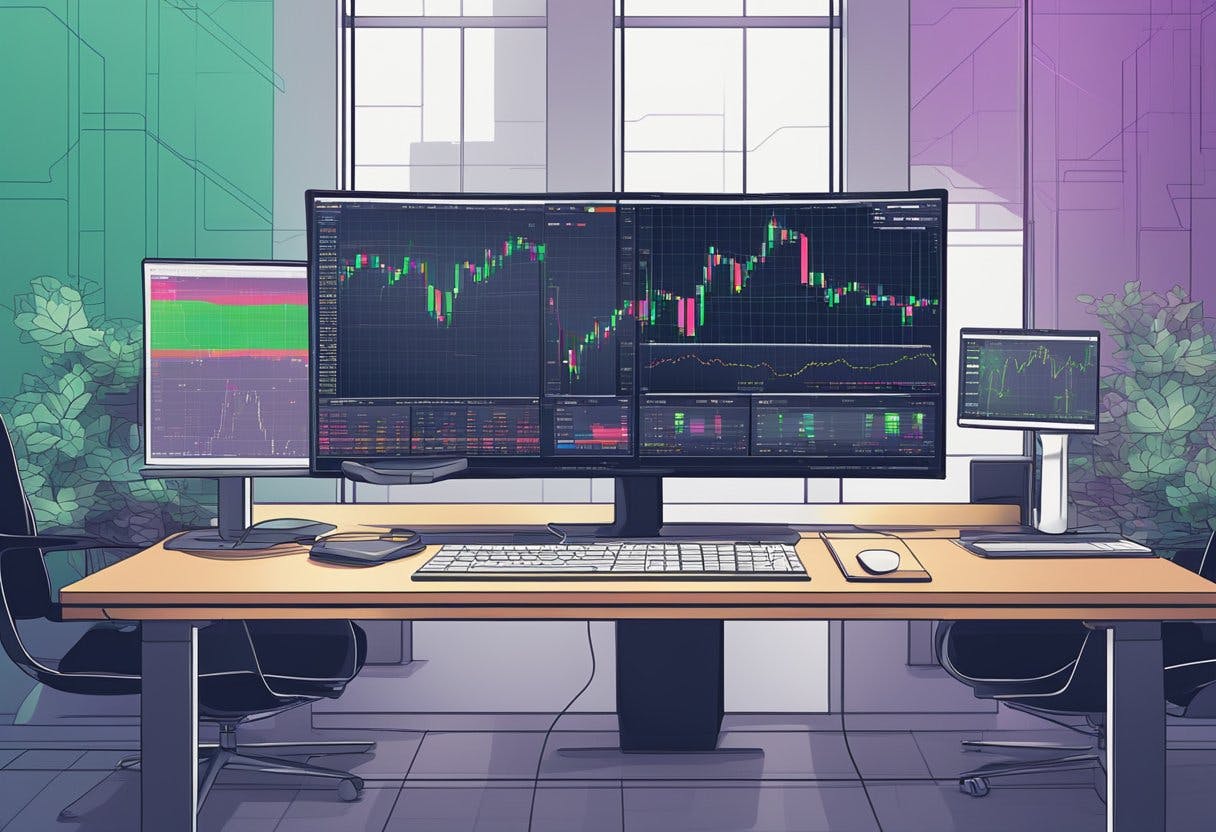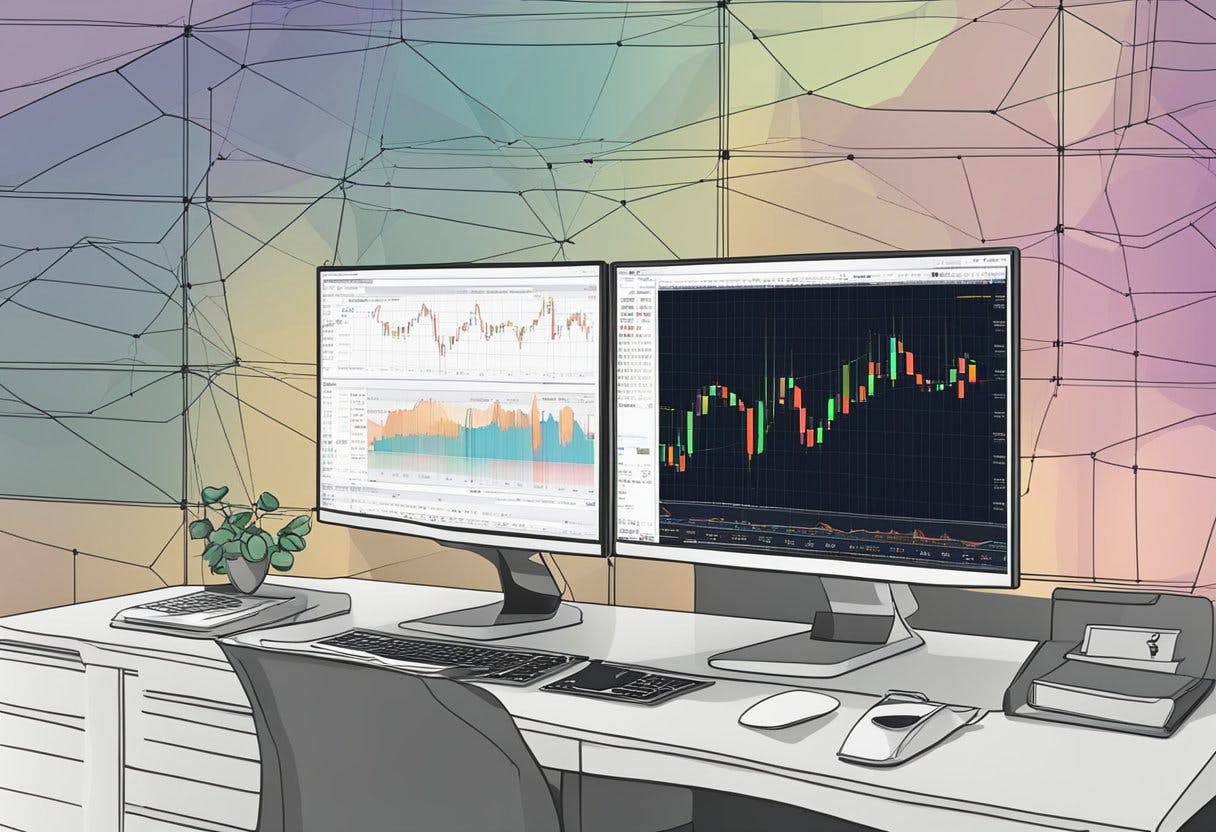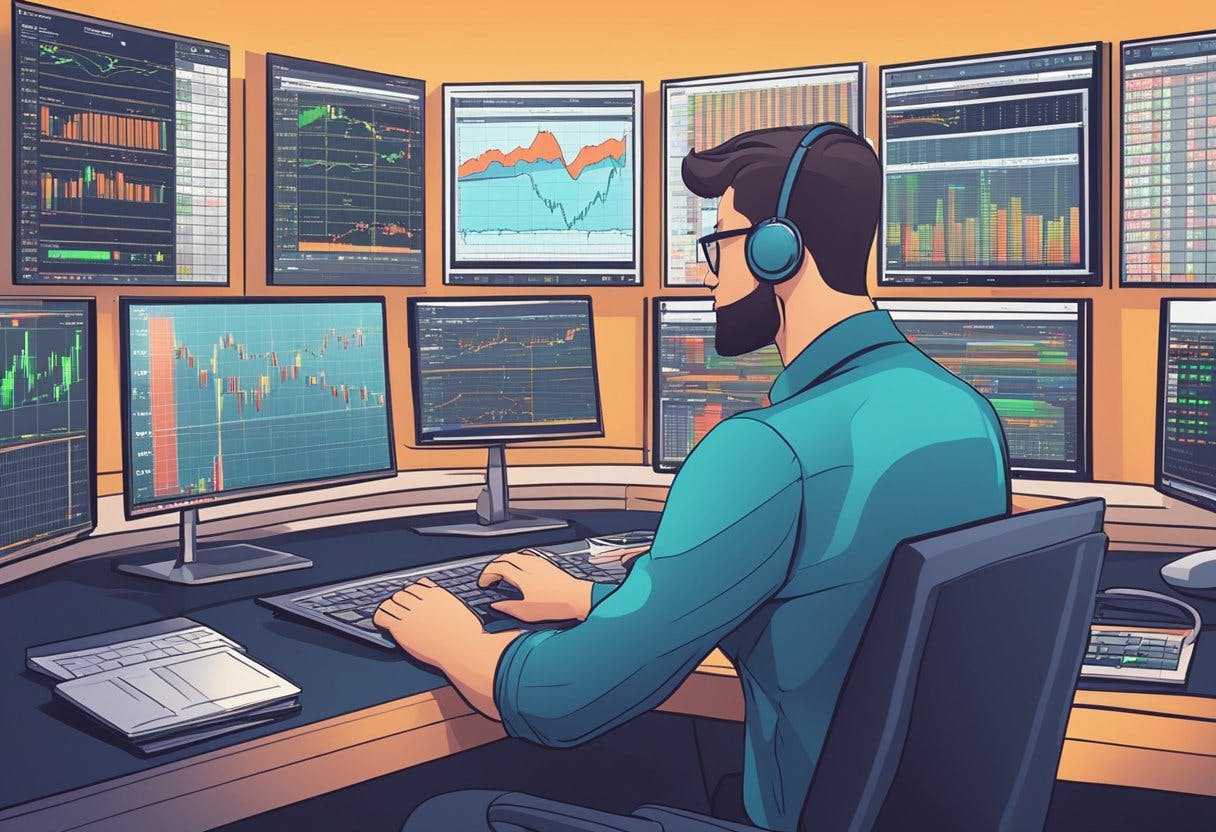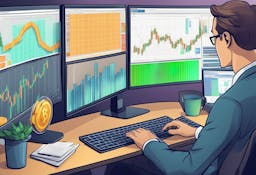
Algorithmic Forex Trading: Pros and Cons

Algorithmic trading, also known as automated trading or black-box trading, is a method of trading that involves the use of computer programs to execute trades based on predefined rules and algorithms. Algorithmic forex trading has become increasingly popular in recent years due to its ability to execute trades at high speed and with precision. However, like any trading strategy, algorithmic forex trading has its pros and cons.
Understanding Algorithmic Forex Trading
Algorithmic forex trading involves the use of computer programs to execute trades based on predefined rules and algorithms. These rules and algorithms are designed to take advantage of market movements and execute trades quickly and efficiently. Algorithmic trading has grown significantly in popularity since the early 1980s and is now used by a wide range of traders, from individual investors to large financial institutions.
Advantages of Algorithmic Forex Trading
One of the key advantages of algorithmic forex trading is its ability to execute trades at high speed and with precision. Algorithms can process vast amounts of market data in a fraction of a second, allowing traders to take advantage of even the smallest price movements. Algorithmic trading also eliminates the emotional bias that can affect human traders, allowing for more objective decision-making. Additionally, algorithmic trading can be backtested to optimize trading strategies and improve performance.
Risks and Challenges
Algorithmic forex trading also comes with its own set of risks and challenges. One of the biggest risks is the potential for technical glitches or errors in the algorithm, which can result in significant losses. Additionally, algorithmic trading can be vulnerable to market volatility and unexpected events that can disrupt trading strategies. Traders must also be aware of regulatory risks and ensure that their algorithms comply with all relevant regulations.
Key Takeaways
- Algorithmic forex trading involves the use of computer programs to execute trades based on predefined rules and algorithms.
- The advantages of algorithmic forex trading include high speed and precision, objective decision-making, and backtesting for strategy optimization.
- The risks and challenges of algorithmic forex trading include technical glitches, market volatility, unexpected events, and regulatory compliance.
Understanding Algorithmic Forex Trading

Definition and Overview of Algorithmic Trading
Algorithmic trading is a type of trading that utilizes computer programs to execute trades automatically. These programs, or algorithms, are designed to analyze market data and identify trading opportunities based on predefined rules. Algorithmic trading has become increasingly popular in recent years, as it allows traders to execute trades at high speeds and with a high degree of accuracy.
In the context of Forex trading, algorithmic trading is often referred to as automated trading. This is because the algorithms are programmed to execute trades automatically based on predefined rules. Automated trading systems can be designed to trade a variety of currency pairs, and can be programmed to take into account a range of factors, such as exchange rates, market trends, and economic indicators.
The Forex Market Landscape
The Forex market is the largest financial market in the world, with an estimated daily trading volume of over $5 trillion. It is a decentralized market, meaning that there is no central exchange where all trades are executed. Instead, traders buy and sell currency pairs through a network of banks, brokers, and other financial institutions.
Currency pairs are traded based on their exchange rates, which are determined by a variety of factors, including economic indicators, political events, and market sentiment. Traders use a range of strategies to try and profit from these fluctuations in exchange rates, including fundamental analysis, technical analysis, and algorithmic trading.
Algorithmic trading has a number of advantages over other trading strategies. For example, it allows traders to execute trades at high speeds and with a high degree of accuracy. It also allows traders to backtest their strategies using historical data, which can help to identify potential weaknesses and improve performance.
However, algorithmic trading also has some disadvantages. For example, it can be difficult to develop effective algorithms, and there is always a risk that the market may behave in unexpected ways, leading to losses. Additionally, algorithmic trading can be expensive, as it often requires specialized software and hardware.
Advantages of Algorithmic Forex Trading

Algorithmic Forex Trading has become increasingly popular due to the advantages it offers over traditional trading methods. In this section, we will discuss some of the key advantages of Algorithmic Forex Trading.
Speed and Efficiency
One of the biggest advantages of Algorithmic Forex Trading is speed and efficiency. Algorithmic trading systems can execute trades at high speed and with precision, which is not possible with manual trading. Algorithms can process vast amounts of market data in a fraction of a second, allowing traders to take advantage of even the smallest price movements. This can help traders to enter and exit trades at the optimal time, which can lead to increased profits.
Backtesting and Optimization
Another advantage of Algorithmic Forex Trading is the ability to backtest and optimize trading strategies. Algorithmic trading systems can be programmed to use historical data to test and optimize trading strategies. This can help traders to identify the most profitable trading strategies and eliminate those that are not working. Backtesting can also help traders to identify potential risks and adjust their trading strategies accordingly.
Emotionless Trading Decisions
Algorithmic Forex Trading can also help traders to eliminate emotions from their trading decisions. Emotions can cloud judgment and lead to inconsistent trading decisions. Algorithmic trading systems can be programmed to follow a set of rules and execute trades based on those rules. This can help traders to maintain discipline and make consistent trading decisions, which can lead to more profitable trades.
In conclusion, Algorithmic Forex Trading offers several advantages over traditional trading methods. These advantages include speed and efficiency, the ability to backtest and optimize trading strategies, and the elimination of emotions from trading decisions.
Risks and Challenges

Algorithmic trading in Forex has its own set of risks and challenges. While the speed and efficiency of algorithmic trading are its main advantages, there are also a few drawbacks that traders need to be aware of.
Market Volatility and Flash Crashes
One of the major risks of algorithmic trading is market volatility and flash crashes. In such conditions, the market moves rapidly and unpredictably, which can result in significant losses. If the algorithmic trading system is not designed to handle such market conditions, it may result in significant losses.
Over-Optimization and Complexity
Another challenge of algorithmic trading is over-optimization and complexity. Developing and maintaining algorithmic trading systems requires a strong understanding of programming, data analysis, and market dynamics. Technical challenges may arise during system development and deployment, which can lead to over-optimization and complexity.
System Failures and Technical Glitches
Algorithmic trading systems are not immune to system failures and technical glitches. There are additional risks and challenges such as system failure risks, network connectivity errors, time-lags between trade orders and execution, and most importantly, technical glitches. These risks can lead to significant losses if not monitored and addressed in a timely manner.
In summary, algorithmic trading in Forex has its own set of risks and challenges. Traders need to be aware of these risks and challenges and take measures to mitigate them. Proper monitoring, testing, and risk management can help traders to minimize the risks associated with algorithmic trading.
Strategic Considerations in Algorithmic Trading
Algorithmic trading is a popular method of trading in the forex market. It involves the use of computer programs to execute trades based on pre-set rules and conditions. While algorithmic trading provides several benefits, it also comes with its own set of challenges. In this section, we will discuss some strategic considerations that traders should keep in mind when developing trading strategies for algorithmic trading.
Developing and Testing Trading Strategies
Developing a profitable trading strategy is one of the most important aspects of algorithmic trading. Traders need to develop a set of rules and conditions that can be used to execute trades automatically. This involves analyzing historical data, identifying patterns, and testing different strategies to see which ones work best.
Backtesting is an essential part of developing and testing trading strategies. It involves testing a strategy using historical data to see how it would have performed in the past. This can help traders identify potential weaknesses in their strategies and make necessary adjustments.
Risk Management and Diversification
Risk management is another crucial aspect of algorithmic trading. Traders need to manage their risk carefully to avoid significant losses. This involves setting stop-loss orders, managing leverage, and diversifying their portfolios.
Diversification is essential in algorithmic trading. Traders need to spread their risk across multiple assets to reduce the impact of any single trade. This can help them minimize losses and maximize profits.
Overall, traders need to develop a robust trading strategy that takes into account historical data, risk management, and diversification. They need to test their strategies thoroughly using backtesting and optimization techniques to ensure that they are profitable and reliable. By keeping these strategic considerations in mind, traders can increase their chances of success in algorithmic trading.
Conclusion
Algorithmic trading has revolutionized the Forex market by enabling traders to make informed decisions based on complex algorithms and mathematical models. While algorithmic trading has its advantages such as speed, efficiency, and the ability to analyze vast amounts of market data within seconds, it also has its drawbacks.
The success of algorithmic trading depends on the accuracy of the algorithms and the quality of the data used. Poorly designed algorithms or inaccurate data can lead to significant losses. Additionally, algorithmic trading systems cannot account for unexpected events that can cause sudden market fluctuations.
Despite its drawbacks, algorithmic trading remains a popular choice among Forex traders. It provides traders with a systematic approach to trading, which can help minimize human error and emotions. However, it is important to note that algorithmic trading should not be solely relied upon. It is essential to have a thorough understanding of the market and to implement risk management strategies.
In conclusion, algorithmic trading is a powerful tool that can help traders make informed decisions in the Forex market. However, it is not a one-size-fits-all solution, and traders should carefully consider the pros and cons before implementing such a system. With proper risk management and a robust algorithm, algorithmic trading can be a valuable addition to any trader’s toolkit.
Frequently Asked Questions
What advantages does algorithmic forex trading offer to investors?
Algorithmic forex trading offers several advantages to investors. One of the main advantages is speed and efficiency. Automated systems can analyze market data, identify trading opportunities, and execute trades in a matter of milliseconds. This can allow investors to take advantage of market movements more quickly and efficiently than manual trading methods.
Another advantage of algorithmic forex trading is the ability to backtest trading strategies. This allows investors to test their strategies against historical data to see how they would have performed in the past. Backtesting can help investors refine their strategies and improve their chances of success in the future.
What are the potential risks associated with algorithmic forex trading?
While algorithmic forex trading can offer several advantages, it also comes with potential risks. One of the main risks is the possibility of technical failures. Automated systems can malfunction or experience connectivity issues, which can result in missed trades or incorrect orders.
Another risk is the possibility of over-optimization. This occurs when a trading strategy is too closely tailored to historical data and does not perform well in real-world market conditions. Over-optimized strategies can lead to losses and reduced profitability.
How does automated forex trading differ from traditional trading strategies?
Automated forex trading differs from traditional trading strategies in several ways. Automated systems rely on computer algorithms to analyze market data and execute trades, whereas traditional trading methods rely on human analysis and decision-making.
Automated trading systems can also operate 24/7, whereas traditional trading methods are typically limited to regular market hours. Additionally, automated systems can execute trades much faster than manual trading methods, which can allow investors to take advantage of market movements more quickly.
What factors should be considered when choosing software for algorithmic forex trading?
When choosing software for algorithmic forex trading, several factors should be considered. One of the most important factors is reliability. It is crucial to choose software that is reliable and has a proven track record of success.
Another important factor is ease of use. The software should be user-friendly and easy to navigate, even for investors with limited technical knowledge. Additionally, the software should offer robust backtesting capabilities and allow investors to customize their trading strategies.
Can algorithmic trading systems consistently outperform manual trading?
While algorithmic trading systems can offer several advantages over manual trading methods, it is not a guarantee that they will consistently outperform manual trading. Market conditions can be unpredictable, and even the most sophisticated trading algorithms can fail in certain situations.
However, when properly designed and implemented, algorithmic trading systems can offer a competitive advantage over manual trading methods. They can analyze market data more quickly and efficiently, and execute trades with greater precision.
What are the initial steps to setting up an automated forex trading system?
The initial steps to setting up an automated forex trading system involve selecting a reliable software platform and developing a trading strategy. The software platform should be user-friendly and offer robust backtesting capabilities.
The trading strategy should be based on sound technical and fundamental analysis, and should be tested thoroughly using historical data. Once the strategy has been developed and tested, it can be implemented using the automated trading system.
Overall, setting up an automated forex trading system requires careful planning and attention to detail. With the right software platform and trading strategy, investors can take advantage of the benefits of algorithmic trading and potentially improve their chances of success in the forex market.
Read More




